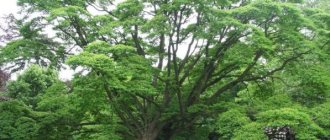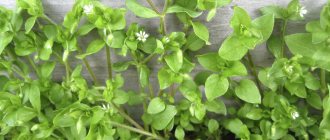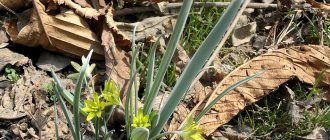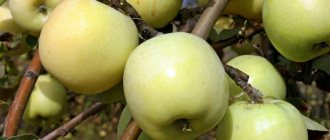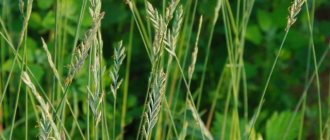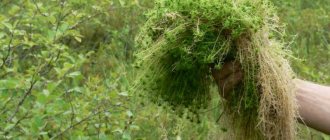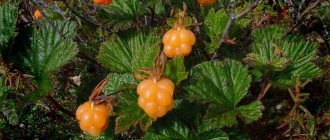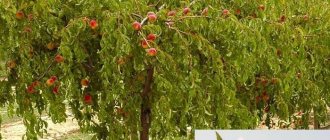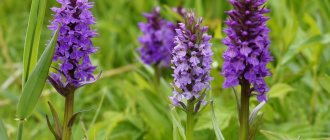Botanical name: Weeping willow, Babylonian (Salix), genus of the Willow family.
Homeland of weeping willow: Iran, Western China.
Lighting: photophilous.
Soil: light to medium loams.
Watering: moderate.
Maximum tree height: 25m.
Average lifespan of a tree: 100 years.
Planting: seeds, cuttings and layering.
Description of the species
White willow is popularly called silver willow, broom or willow, and belongs to the willow family. The distribution area of the species occupies the middle zone of the European part of Russia. The frost-resistant crop tolerates harsh climates with temperatures down to minus 35 degrees. The tent-shaped form of trees very often takes on a spreading form. Reaches a height of 20 to 30 meters.
The powerful trunk, sometimes forked, is covered with fissured dark gray bark. The shoots of a young tree are olive-green or red-brown in color, silvery at the ends. Mature trees have yellow or red-brown, bare-looking shoots. Lanceolate buds are flattened, sharp in shape, red-yellow in color, up to 6 mm. Leaves with pointed tips, 5 to 15 cm long.
When blooming they are green, silvery-silky on the reverse side. In autumn, the leaves change color to yellow-bronze.
When the wind blows, the willow leaves turn their backs, giving the tree a white color. Flowering occurs in April-May. Small greenish-yellow flowers are connected in racemes-catkins and reach a length of 3-5 cm. Small capsule-shaped fruits ripen from the end of May, and after a month the seeds are carried by the wind over long distances.
A well-developed root system of lateral roots goes deep into the ground up to 3 meters. In nature, white willow can grow for more than 100 years. The characteristics of the species with high rates of longevity classify the culture as one of the most worthy representatives of the willow family.
Features of culture
Tall representatives of the Willow family are most common in the central part of Russia, where they have several other names - willow, willow, willow, willow. In landscape gardening, bush willow is mainly used, since it is more decorative and compact. Various species and varieties of this crop have very different shapes - from dwarf and creeping bushes to very spreading shrubs. Despite such obvious differences, they have a number of common features.
Related article:
How to protect branches and preserve the harvest: TOP 5 supports for fruit trees
The leaves are predominantly narrow, oblong, pointed at the apex and base, less often oval or round. The surface of the leaf blade is smooth, sometimes covered with a light fluff underneath.
The flowers are especially attractive due to their unusual nature. In most bushy species, they appear in early spring, first in the form of silvery “puffs,” which are popularly called “camels” or “seals.” But these are still buds, protected from the cold by densely located fibers. During the flowering period, small flowers with a pronounced honey aroma and a golden, reddish or silver color are formed on top of these villi. The length of the inflorescences varies between 1.5–6 cm and, like the color, depends on the variety.
Propagation is carried out mainly by cuttings, since the plant easily forms adventitious roots. The seeds lose their viability in just a few days, so they are practically not used as planting material (except for breeding in nurseries).
Related article:
Decorative mock orange
For willow crops, the correct location is very important. Ornamental varieties of willow should be grown in well-lit or slightly shaded areas without drafts and strong winds. When there is a lack of sunlight, plant growth is significantly impaired, they lose their attractiveness and are at increased risk of developing diseases. The soil should be nutritious, breathable and moist, preferably with a high groundwater level.
Most species and varieties are characterized by excellent frost resistance. But young plantings up to three years old are recommended to be covered for the winter to avoid partial freezing, especially in harsh climates. The grafting site is most sensitive to frost.
To accelerate growth, improve development and increase attractiveness, ornamental willows need to be fed annually. The composition and amount of fertilizer applied depends on the age and size of the plant itself, as well as the composition of the soil in which it grows.
Features of cultivation
This unpretentious plant is found almost everywhere in nature. The choice of willow planting site is determined based on the characteristics of the area. Willow is not particularly demanding on soil; it can grow in any area, even on crushed stone. However, sandy-silty sediments are the most optimal for it.
It mainly grows in damp places, located near rivers, lakes, ponds, ditches, and on the edges of damp forests. It also gets along well in urban environments. Good lighting, sun and light partial shade helps trees develop and grow better. Places near groundwater are recommended for planting willow.
The time for planting is chosen in the spring before the buds open, or in the autumn - after the leaves fall. Seedlings are selected one year old with developed roots, without defects and dry shoots.
- A hole is dug with a diameter and depth of the same size - 50 cm
- A nutrient mixture of peat, compost and soil is poured into the bottom, with the addition of 200 grams of azofoska. For heavy soil, especially clayey soil, add drainage with a 10-15 cm layer of crushed stone or sand.
- A seedling is lowered into the middle of the hole and covered with soil with the roots evenly distributed
- The soil around the tree is compacted and watered with water at the rate of 2 buckets of water per 1 seedling.
- Mulching with sawdust or tree chips is carried out
Decorative forms of white willow
The tree is easy to care for, is characterized by active growth and survives in harsh climates without problems. The advantages of the plant allow it to be widely used in landscaping various objects and landscape design. There are a number of decorative forms:
- Coerulea. A 20-meter willow tree, strewn with leaves of different colors: the top is sea-green, the bottom is light.
- Limpde . A tall honey-bearing tree with a wide trunk and a narrow-conical crown. Green elongated leaves are attached to the yellowish and light brown branches, which begin to bloom simultaneously with the flowers in the second half of spring. Prefers sunlit places and moist alkaline soils. Not afraid of frost.
- Argentea. A plant with hanging branches covered with leaves with a silver tint, which over time acquire a dark green color. At the beginning of spring, due to the crown covered with golden earrings, the tree resembles a yellow cloud.
Willow Argentea
- Tristis . A plant with a weeping crown. In autumn, the green lanceolate leaves change color to yellow-green. Is a honey plant. It begins to bloom in April along with the leaves blooming, although it may be later. It grows better in damp places, but will not die in dry places.
- Sericea. Low tree. Characterized by slow growth. The leaf crown is rounded and the color is silver.
- Crying. It is famous for its flowing branches with narrow leaves of a light green color. Bright mustard branches with a red-brown tan, like the jets of a waterfall, rush down. The tree can withstand waterlogging, but not waterlogging.
Weeping Willow
- Britzenskaya - distinguished by reddish branches. Oval - distinguished by oblong-elliptical leaves. Gray - foliage with a bluish tint is placed on stems obliquely extended upward. Yellow weeping - looks best near a pond. Shiny - has silvery leaves on both sides.
- Cremesina and Vitellina. Gained popularity abroad. Before or after flowering, trees are pruned low, which makes them more visible against the backdrop of dazzling snow, since the bark of young shoots of the Vitellina variety has a golden-yellow hue, while Cremesina is bright scarlet.
Decorative forms coexist both in large areas and in small gardens. In order to give the crown the desired shape and size, it is necessary to cut the plant at the desired height.
Willow Limpde
Proper care of willow
The full development of willow depends on high-quality and regular care. During the first period after planting, trees require special attention and the implementation of all basic growing procedures. The moisture-loving willow requires frequent watering and periodic spraying. Watering the plants after planting is carried out once a week in the morning or evening. From 2 to 4 buckets of water are poured onto the crown or under the root of the seedling.
In dry times, the procedure should be doubled, with constant spraying of the crowns of the seedlings. In the first years, young seedlings grow in height from 1 to 3 meters. Fertilizing helps preserve the decorative qualities of willow and saturates the soil with useful nutrients, which lead to abundant flowering. Complex fertilizers are applied after slight loosening throughout the season.
During 1 season, 2-3 feedings are carried out, the last one should be done in July. From mid-August, potassium sulfate and superphosphate are added to the soil. Fallen leaves, due to the tannin content they contain, should not be left under the tree. The formation of the crown is carried out in order to give the plants a beautiful decorative appearance, as well as for sanitary treatment.
The first pruning after 2-3 years is done when the shoots reach a length of 1 meter. The procedure begins after the trees bloom. The shoots are shortened by 20 cm above the nearest bud. Annual pruning of mature trees is to maintain the shape of the crown.
White willow on video:
Shortening branches by pruning promotes the formation of lateral shoots from the remaining buds, giving the crown a special lushness and density. Proper planting technology helps willow grow quickly and delight with its beautiful appearance. Carrying out all maintenance procedures, including timely pruning, helps maintain the original decorative appearance of trees.
Related article: How avocados grow, growth features and care
Use in folk medicine
All parts of the plant are used in folk medicine. With the help of infusions, skin growths are perfectly removed and wounds heal quickly.
The healing properties of white willow help:
- relieve pain from injuries
- reduce elevated body temperature
- reduce inflammation in joints, respiratory tract, intestines
- relieve pain during a critical period of the menstrual cycle
- weight loss by normalizing carbohydrate metabolism
- relieve swelling from insect bites
- improve microcirculation of capillaries
- rejuvenate and improve skin condition
- stimulate cerebral circulation
- relieve acute headaches and migraines by lowering blood pressure
White willow has an antibiotic effect due to the presence of salicin, a plant alkaloid. The useful arsenal of active biological substances of the plant is widely used for medicinal purposes.
White willow tree: description, cultivation, care
One of the most common representatives of the flora, almost all over the world, is the white willow Tristis.
People added the epithets white, silver, and weeping to its name. Thanks to its unpretentiousness, willow quickly takes root and grows in almost any conditions. This fact has become the reason that the tree is endowed with rich symbolism and many myths, legends and customs are attached to it.
Willow is widely popular in medicine and landscape design.
The tree is also known under the names willow, belotal, molokotnik, willow, tal, willow, white willow, bredina, willow. The variety of names often provokes questions about what it is. Let's consider the main features of growing whitebush.
White willow is a tall (20-30 m), graceful deciduous tree, a member of the Willow family. The lush crown of the plant resembles a giant tent. The willow trunk can reach up to 3 m in diameter, it is covered with dark gray bark with deep cracks.
Willow differs from other trees in its wayward long flexible branches, olive-green or red-brown in color, which give it volume and special decorativeness.
There are about 600 varieties of willow in the wild, but about 100 live in our climatic conditions.
Silver willow blooms in late April or early May. Its yellow-green flowers are collected in inflorescences that look like earrings. People call willow inflorescences “seals”. Flowers of different sexes bloom on one inflorescence: males have two stamens, females have a pistil with an upper ovary.
On the faded “seals” fruits are formed, in the form of boxes with seeds. The wind carries the ripened seeds to a huge state, which contributes to the widespread distribution of the tree. If the seeds fall into water, they can remain viable for several years; in the open air, they are capable of germination only for a while.
The lifespan of the silver willow is about 100 years. In one year, the tree can grow 100 cm in height and 50 cm in width.
Special attention should be paid to the description of willow leaves. They are lanceolate, narrow and long, the lower part of each leaf is covered with small grayish fluff (hence the epithet silver). This feature gives willow a certain femininity and tenderness. If the weather is calm outside, the tree covered with leaves looks green, but when a light breeze rises, the foliage begins to move, turn the bottom side to the top, and the tree becomes white.
Willow has a powerful and well-developed root system. It is worth noting that the level of development and deepening of roots depends on the level of groundwater: the closer the water, the less the roots develop. The roots of willows growing in dry places can go 2-3 m deep.
Growing conditions
Despite the fact that white (weeping) willow is an unpretentious and undemanding tree, some measures must be taken when planting it. The better conditions you create for this delicate beauty, the brighter and healthier she will look.
Location and lighting
Willow is a very light-loving and moisture-loving representative of the flora. These factors should be taken into account when choosing a place to plant a plant.
It is best to choose wetland areas. Ideally, land near a pond, lake or other body of water. Such a place guarantees that the tree will never suffer from lack of moisture.
Soil for growing
Willow is generally unpretentious to the type of soil. The tree gives preference to light and medium loams. Willow grows quietly on sandy, swampy and infertile gravelly soils.
Rules for planting willow
When starting to plant a willow, it is worth considering the type of its root system. Any time is suitable for planting a willow whose root system is closed - from April to October. Plants with an open root system are best planted in early spring, before buds open, or in late autumn, after the leaves have fallen.
The planting process itself consists of the following stages:
- Dig a hole for planting, the diameter of which for shrub species should be 50 cm, for tall trees - 60 cm. The depth of the planting hole for both types is 40 cm. A willow seedling with a closed root system is placed in a hole the size of which is equal to the size of an earthly coma.
- If the soil is heavy, the bottom of the hole must be covered with sand or crushed stone (20-30 cm) to ensure drainage.
- To directly plant a willow seedling, prepare a substrate from peat, compost, soil in equal proportions, add azofoska (200 g for one plant) to it. A third of the planting hole is filled with this substrate and the seedling is placed in it.
- After this, the hole is filled in, and the earth around it is compacted, making a small depression for watering.
- After finishing the process, you need to pour two buckets of water onto the soil.
- A tall seedling is tied to a stake previously forgotten in the ground so that it does not break and is fixed in a vertical position.
Article on the topic: Kanistel description and features
How to care for a tree
Silver willow needs special care only during adaptation to a new planting location. Despite the fact that the plant is unpretentious, you should not forget about it in the next years of life:
- The main rule for caring for a recently planted willow is watering, since the tree is extremely fond of moisture. The seedling needs to be watered once a week early or in the evening. To organize the process, use 2-5 buckets of water. The tree also needs spraying.
- Young white willows need to loosen the soil to the depth of a spade bayonet.
- In order for the tree to grow well, it is necessary to mulch the soil with peat, the layer of which should be 5-7 cm.
- To form a decorative crown, willows are given “haircuts” of long shoots and dead branches are trimmed.
- If you notice weak growth of the plant, it needs feeding. Nitroammophoska (60-80 g/plant) is best suited as a fertilizer.
Where does it grow and what does silver willow look like?
The plant is especially common in central Russia . Depending on the growing conditions, its lifespan reaches more than a century. After planting, growth is very active, then slows down.
The tree has a lush crown consisting of long, gently flowing stems with green, silvery foliage. In mid-spring, yellow flowers that look like fur balls bloom on the willow. Although the plant is undemanding when it comes to soil composition, it does need sufficient moisture. Thanks to its decorative advantages: abundant beautiful foliage, numerous crown shapes, bright shoots, willow has found wide use in landscaping the banks of reservoirs, both in group plantings and single ones.
Willow is used to prevent soil erosion and to stabilize slopes
Diseases and pests of white willow
Silver willow is an unpretentious tree, but this does not mean that you need to neglect the rules of caring for it. In addition, the willow must be protected from diseases and pests, and its health condition must be constantly monitored.
The most important pests that encroach on willow are willow leaf roller, flower fly and aphid.
Leaf roller caterpillars gnaw willow leaves and deprive the tree of its decorative appeal. The fight against such a pest involves destroying the clutches, larvae and moths of the insect manually.
In early spring, willow succumbs to attacks from flower flies. To combat this pest, the tree is sprayed with Karbofos, Kinmiks or Decis.
To get rid of aphids, which suck the vital juices from the plant, I use insecticides, in particular Fufanon, Karbofos, Actellik, Akarin.
The main diseases of white willow are powdery mildew, scab, and rust, which lead to necrosis of leaf cells and young shoots. Fungicides (Fundazol, Raek, Topsin, Topaz, Fundazim) eliminate such uninvited guests.
Areas of application
Willow is distinguished not only by its variety of species, but also by its richness of applications.
Since ancient times, its branches have been widely used in willow weaving; willow fishing was very popular, which can be seen in our time. This popularity is due to the excessive flexibility of willow branches. Baskets, chairs, fences and other items are woven from willow. The willow bark is used to make fiber for laces, ropes, and burlap.
Palm bark is a widely known medicinal remedy. Tinctures made from crushed bark are used to treat colds and fever, and compresses made from such tinctures reduce fever. In addition, a decoction is made from the palm bark, which effectively cleanses and heals wounds, burns, abscesses and other injuries.
One of the main purposes of willow is to help designers create excellent landscape designs. Willow is an indispensable element of landscaping in city parks and decorative design of country and garden plots. An unsurpassed decorative decoration is a willow hedge.
At first glance, willow is an inconspicuous plant. We have become accustomed to the fact that a tree grows at almost every step and often do not pay attention to its feminine attractiveness and value. But, despite this attitude, willow gives a person not only aesthetic pleasure, but comfort (if it is a material for making furniture) and health, we are talking about the medicinal properties of willow.
Considering the fact that planting and caring for a tree does not require a lot of labor and time, such a plant rightfully takes the title of the leading decorative decoration of garden and park areas.
Application and benefits
- Willow wood can be used as an ornamental material. Previously, troughs, dishes, and yarn shuttles were made from it. Rope and cord were made from willow bark fibers. The rods were used to build fences in villages, rarely as a building material.
- What is willow as a planting material? White willow is planted decoratively in parks and near ponds. Willow grows actively, which allows it to be used for quick landscaping of roadside areas.
- Willow bark has long been used as a tanning agent for leather and as a dye for various natural fabrics (red-brown).
- Willow is also a valuable early honey plant. Bees collect pollen, nectar and bee glue from it. You can get up to 150 kilograms of honey from 1 hectare. It has excellent taste and is very good for health.
Source: fb.ru
nature
Unpretentious, useful and spectacular white willow
This tree of the Willow family is widely known as white or silver willow, willow, willow and willow. It prefers damp, damp places and grows along the banks of rivers, ponds and reservoirs. Willows often form entire groves that stretch along the water's edge for considerable distances. Thanks to their well-branched root system, trees are used to strengthen the banks of reservoirs and ravines.
White willow can be described as a large dioecious tree with a large crown that grows up to 20-30 meters in height. This distinguishes it from other species of the family, most of whose representatives are shrubs. Willow is photophilous, frost-resistant and not too demanding on soils. It prefers sandy or sandy-silt moist soil, tolerates urban conditions well and can live up to 100 years.
The crown of white willow is spreading, tent-shaped. The trunk is powerful, covered with dark gray bark with cracks. The leaves are simple, petiolate, with stipules.
They are green above and white-pubescent below. The tree is an early and valuable honey plant. Small flowers are collected in cylindrical earrings. Willow blooms simultaneously with the appearance of leaves, in April-May, and in May-June the seeds ripen.
Shrub varieties
The most beautiful willows, most often used in landscape gardening, are represented by six species:
- creeping
- purple
- spreading
- gray (ash)
- Siberian
- subozita.
Related article:
Compatibility of trees and shrubs on the site
Each variety includes many varieties and has its own advantages.
Creeping
Creeping willow grows in the form of a compact bush or tree, reaching no more than 1 m (in rare cases, up to 2 m) in height. The crown can grow up to 2 m in diameter, and its shape depends on the variety and growing conditions, but can be created artificially, since the plant tolerates pruning well.
The most popular varieties include:
- Armando - specially bred for use in landscape gardening. It grows no higher than 0.8 m, the crown is up to 1 m. During flowering it is covered with very beautiful pink “seals”. As soon as this period passes, the branches are pruned to form a more luxuriant crown.
- Voothuisen is the most frost-resistant, but only when grown not in standard form. Under a layer of snow it can withstand temperatures down to –29°C. The tree may suffer from severe frost and therefore requires winter shelter.
- Nitida is a dense shrub about 0.6 m high and up to 1 m wide. The slowest growing of all representatives of the crop.
- Ordinary is a medium-height (up to 0.75 m) shrub with a spreading crown, the width of which is 2 times the height of the plant (1.5–1.6 m). It is not capricious in relation to the soil, it tolerates transplantation easily. Very photophilous.
- Silver is the shortest (0.3–0.5 m), but very spreading - the crown grows up to 1 m in diameter. Another difference is the presence of fluff on the leaf plates, which gives them a silvery tint.
Related article:
Apricot: conditions for survival in harsh climates
Silver
All of these varieties, except Voothuisen, have average frost resistance and can withstand temperatures not lower than –25°C. Frosts are especially dangerous for annual shoots, but with prolonged and severe cold weather, a willow bush can die completely.
Purple
Purple bush willow is one of the most popular plants in landscape design, valued for its spherical shape and unusual color. The height of the bush varies between 1–6 m. Long shoots are covered with red-brown bark. During the flowering period, purple catkins form on them, which is how the species got its name.
The lanceolate leaves are blue-green in color. Therefore, the popular second name “red-leaved willow” does not correspond to reality. Only the branches of the plant have a red tint.
Related article:
Formation of trees and shrubs
Another advantage of this variety is the ability of the root system to strengthen the soil, which is especially important on the banks of reservoirs. This species grows best on neutral soils, but takes root on any soil.
The most famous varieties:
- Gracilis is a rounded shrub no higher than 1 m with long shoots and small leaves of a bright emerald color.
- Lighthouse - distinguished by erect long branches with narrow leaves.
- Nana is a bush up to 1 m high with a rounded crown with a diameter of up to 2 m. It is the most frost-resistant in this group.
- Pendula is a shrub up to 1.5 m with a weeping crown of unusual light green color. In spring it requires mandatory pruning. Drought resistant.
Purple willow is most often used as an addition to tall plants, giving them a well-groomed, neat appearance.
Related article:
Beautiful trees to plant in your garden
Spreading
Spreading willow is a low (up to 1 m) shrub with a spreading, wide (up to 4 m) crown, which is formed by flexible branches covered with purple or red-brown bark. This bush species is a slow-growing one. It is resistant to frost and strong winds. Most in demand when decorating rocky hills.
The leaves are even, lanceolate, flat. The upper side is green in color, the lower side is silver, covered with a light edge. Stipules are narrowly lanceolate, rapidly falling, and often completely absent.
During flowering, catkins emit a strong aroma. Therefore, the plant is considered an excellent honey plant.
Gray (ash)
Gray willow is a low shrub with a dense spherical crown. The shoots are thick, but very fragile, abundantly covered with foliage. The surface of the leaf blade has an ash-gray color, which is why the plant got its name.
One of the most moisture-loving representatives of this culture. Ideally, it is planted on the shore of a reservoir. It does not make any special demands on the soil composition and grows well even in swampy peat areas.
Related article:
Popular types and varieties of juniper
The beauty of gray willow is most fully manifested when arranging a hedge. She is not afraid of drastic pruning, so she can be trimmed to get the desired shape.
Siberian (rosmarinolium)
Siberian willow is a spreading shrub with a beautiful crown consisting of numerous thin branches with shoots. It can grow up to 2.5 m, but most often the height of the bush does not exceed 1 m with a crown diameter of 3.5 m.
Prefers light soils. Unpretentious, does not require special care. In landscape gardening it is usually used to build hedges.
This is the smallest-leaved willow of the representatives of this species. Its leaves reach a length of no more than 2 cm and are shaped like rosemary sprigs, which served as the basis for the appearance of the second name - rosemary leaf. When young, the foliage is slightly fuzzy, then becomes glossy. The color also changes - from bright green in summer to yellow in autumn. The leaf turns brown before falling.
Related article:
Basic methods of grafting fruit trees and shrubs
The advantage of this variety is its absolute unpretentiousness. The shrub grows well in any soil and even in urban conditions with high air pollution. At the same time, it is resistant to frost and can withstand temperatures down to –30⁰С without shelter.
Subozita
Willow angustifolia subosita is the smallest of all bush species: the compact shrub grows to a maximum of 0.5 m, forming a dense spherical crown. Thin straight stems are completely covered with fluff. The bark is green at first, then turns brown. The leaves are elongated, relatively short (up to 3 cm), glossy above, the lower surface is covered with gray-yellow hairs.
The plant is light-loving, not too frost-resistant (down to –23°C) and is afraid of strong winds. Tolerates urban conditions well. There are no special requirements for the composition of the soil, the main thing is that it is sufficiently moist.
Not afraid of a haircut. Sanitary pruning is mandatory, as it requires regular removal of dead parts. It is also advisable to form a standard and crown.
Related article:
Planting and caring for a columnar apple tree
Reproduction, cultivation and care
The tree can propagate by seeds, but since they quickly lose their viability, this method is practically not used for propagation. White willow rarely produces shoots, so vegetative propagation is used by stem cuttings, which are cut before buds open. The cuttings take root quickly. They can first be placed in water to form roots, and then planted in the ground.
Related article: Cryptomeria description and features
When planting, prepare small holes measuring 0.5x0.5 m for each seedling, which need to be filled with a mixture of soil, peat, compost and manure. Choose a sunny, well-lit place. Young seedlings require watering, fertilizing with mineral fertilizers and crown formation.
The healing properties of white willow
This tree is widely known in folk medicine. White willow bark is used as a medicinal raw material, the medicinal properties of which are due to the content of the following substances:
- vitamin C;
- flavones;
- lignin;
- catechins;
- anthocyanins;
- salicin glycoside;
- tannins.
White willow bark is harvested from March to May, when sap flow is slow and it is easily separated from the branches. For harvesting, shoots aged from 2-3 to 6-7 years are used. The bark is then dried until it becomes brittle. Medicinal raw materials prepared in this way can be stored and used for 4 years.
A decoction of willow bark is used as an antipyretic for feverish conditions, rheumatism, inflammation of the mucous membranes of the stomach and intestines. It has disinfectant, astringent properties and is used as an anti-inflammatory agent for stomatitis, gingivitis, catarrh of the upper respiratory tract, sore throat and acute respiratory infections.
The decoction has hemostatic, diuretic and choleretic properties. Externally it is used to gargle and gargle, it is used for foot baths for sweating, skin diseases and varicose veins. The medicinal properties of white willow make it possible to use powder from its bark as a hemostatic agent.
Use of white willow and its bark
White willow bark, rich in tannins, glucose, flavonoids, ascorbic acid and resins, has been widely used in folk medicine. Willow bark has an antiseptic, anti-inflammatory, antipyretic and analgesic effect. An infusion of white willow bark is used for colitis, gout, female diseases, gastritis, internal bleeding, liver diseases, spleen diseases and other diseases. A decoction of the leaves of the tree is used for severe bleeding in the intestines and for colds. Pregnant women and nursing mothers are not recommended to use medications containing this plant.
The abundantly branched roots of willow serve to strengthen loose soils and sands. Willow plantations can often be found around mountain streams. Trees are used to secure river banks, canals, slopes, dams, slopes and cliffs.
Thick willow twigs are used to make sheds for sheep and pens for livestock. The bark of the trunk and branches is used as a natural dye, which is used to dye wool, leather and silk red, brown and yellow.
The wood, which is quite soft and pliable, quickly rots and is used for making crafts. The branches are used to feed livestock, especially goats and sheep. Willow bark is used for tanning leather. On Orthodox Palm Sunday, according to a long-standing tradition, branches of a young tree are used instead of palm leaves.
Willow bark juice is included in some cosmetic preparations that smooth out fine wrinkles, relieve redness, and cleanse the skin.
Previously, willow twigs and the bark of this tree were used to make wickerware, furniture, baskets and other products.
White willow is often used in landscape design. Planted in parks and forested areas. The rapid growth of the tree allows it to be used for lining roads and for rapid landscaping.
White willow bark is used for tanning leather. The shoots serve as feed for livestock. In addition, willow is considered a valuable honey plant. Bees take nectar, pollen and bee glue from the tree. When white willow honey crystallizes, it becomes fine-grained, creamy in color, and has a pleasant taste and fragrant aroma.
Use of white willow bark in folk medicine
To prepare the decoction 1 tbsp. a spoonful of crushed raw materials should be poured into an enamel bowl with 200 ml of boiling water. Then keep in a water bath for 20 minutes, strain without waiting for it to cool, and bring with boiled water to the original volume.
For external use, in addition to the decoction, you can prepare an infusion of willow bark. To do this, pour a glass of dry crushed raw materials with a liter of boiling water and leave for 30 minutes. The resulting infusion is added to a basin of hot water intended for foot baths. This remedy not only alleviates the condition of varicose veins, but is also effective against sweating of the feet.
A decoction of willow bark is used for hair loss. To prepare it, 1 tbsp. a spoonful of crushed dry bark and 1 tbsp. A spoonful of burdock roots is poured into 0.5 liters of water and placed in a water bath for 20 minutes. After this, leave for 2 hours and filter. The prepared decoction is used to wash hair during hair loss.
Contraindications for the use of white willow bark internally are:
- Sensitivity to salicylates.
- Pregnancy and breastfeeding.
- Peptic ulcer of the stomach and duodenum.
- Allergic diseases and bronchial asthma.
It is not recommended to use this remedy to treat children and adolescents under 16 years of age. Another contraindication is the simultaneous use of medications prescribed for colds, cough suppressants, amino acids, antacids, vitamins and aspirin.
Using white willow in needlework
The flexible rods of white weeping willow are used to make fences and various handicrafts. This exciting activity is a common type of needlework. Baskets, trays, decorative items and even furniture woven from willow twigs will decorate the interior and bring into it a piece of living warmth and natural atmosphere.
For weaving, use annual and biennial willow shoots. They should be harvested in early spring, when growth has not yet begun, or in late autumn, when it has already stopped. The rods must be straight, flexible, elastic, without damage to the bark and with healthy wood.
Learning to weave simple products is not difficult, you just need to be patient and willow twigs. This wood will give you a hobby for many years, and the accumulated experience and skill can be used to make more complex items, such as furniture. Furniture wicker from willow twigs is beautiful, reliable, easy to care for, and can last for many years.
Decorativeness
#BREAK#
A single weeping willow is a magnificent decoration of the lowland part of the site, a classic tapeworm near the bank of a stream, pond or mini-reservoir. If you plant a weeping white willow in a group with ornamental shrubs, perennials or creeping conifers, then it can claim to be the real center of the garden.
Willow is indispensable for creating green hedges and so-called “living wattles”; its freshly cut twigs can take root in moist soil without any effort on the part of the gardener. The plant is very flexible: using weaving and ablation of flexible shoots, you can create shady alleys and living gazebos.
The online store PLANTLAND.RU offers Salix alba cultivars. Garden forms of weeping willow are distinguished by thinner, gracefully flowing branches and a noble silvery shade of foliage. Weeping willow is especially attractive for those involved in wicker weaving. It is enough to buy several seedlings at a very affordable price, propagate the plant by cuttings, and within two years you will have your own plantation of a first-class vine.
White willow in landscape design
This unpretentious tree, which we also know as willow, willow or white willow tristis, is used in ornamental gardening for landscaping parks and squares. Conditions for willow are especially good where there are bodies of water, large or small. It is valued for its fairly rapid growth and original crown shape. This makes it possible to successfully use wood in the formation of landscape gardening.
As can be seen in the photo, white willow has a spreading crown with hanging branches. It looks great both in single plantings and in landscape compositions. This tree will be a spectacular decoration of a site in the English style, which provides for asymmetry, free layout and maximum proximity to natural conditions.
Long before Christianity, our ancestors revered the white willow. Willow twigs were used as a remedy against the evil eye, and a broom made from them served as a kind of amulet in the house. Such importance was attached to this tree because it was believed that the willow has great vitality, is the first to bloom and receives pure spring energy from the sun earlier than other trees.
Classification
Genus willow, family Willow, order Malpighiaceae. The species can be divided into deciduous tree and shrub forms. Common names: white willow or silver willow, white willow, white willow.
As a result of the work of breeders, many hybrid forms have been developed that are used in parks and landscape design. Most often, the weeping willow Varvittelina or its opposite in appearance, the pyramidal willow with ascending shoots, having a crown in the form of an overturned cone Vitellina piramidalis, is grown for this purpose. There is also a broad pyramidal form with silvery leaves, Kosterii.
